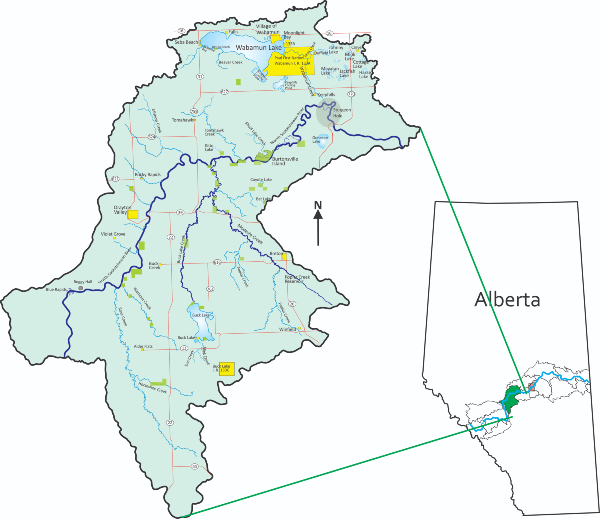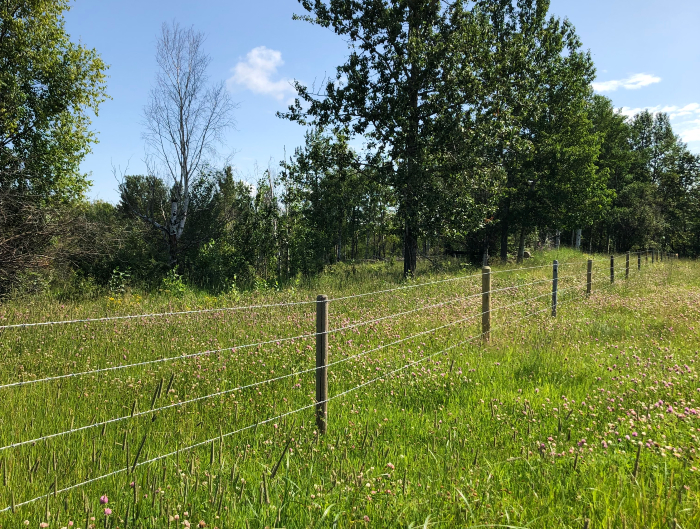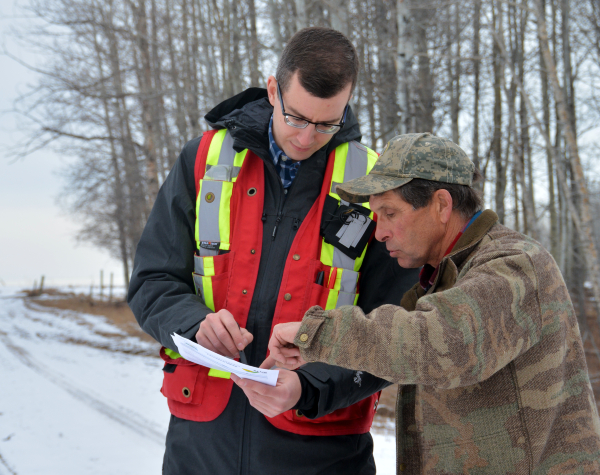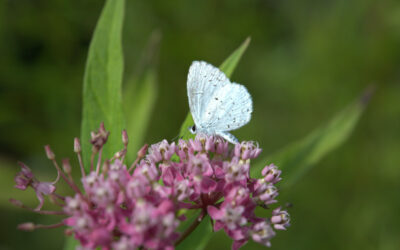Meet Charlie and Theresa Maltais, ALUS Brazeau’s original participants, who have devoted 50+ acres to the production of cleaner water in Alberta’s Modeste subwatershed.

“I like being part of ALUS because it is making a difference,” says Charlie Maltais, ALUS Brazeau’s original participant, proudly displaying his newly installed ALUS sign in 2019. Photo: Ken MacInnis, Brazeau County
The ALUS program arrived in Brazeau County in spring 2016, and ALUS Brazeau signed its first-ever Participant Agreement in June 2017. That pioneering participant was Charlie Maltais.
Charlie and his wife, Theresa Maltais, raise a mixed breed of Red Angus / Charolais cattle on 297 acres in Breton, Alberta.
“I like being part of ALUS because it is making a difference,” said Maltais.
“Theresa and I like to go for nature walks along the creek, and we can see that moose and deer have been coming back to the area, as well as two new beaver dams. The water is cleaner, too.”
Their beautiful property features a large waterway that branches off into various creeks, eventually flowing into the Modeste Creek, a branch of the North Saskatchewan River.
All this is part of the Modeste subwatershed, which the Government of Alberta has identified as a priority area for water quality, flood mitigation and drought prevention in the province.

The Modeste watershed is a sub-basin of the North Saskatchewan River basin, located upstream of Alberta’s Capital Region, which the Government of Alberta has identified as a priority for flood and drought mitigation, as well as an important area affecting water quality in the province.
As such, Maltais’ ALUS projects are part of ALUS Canada’s Modeste Natural Infrastructure Project (MNIP), which is currently helping farmers and ranchers in Wetaskiwin, Leduc, Parkland and Brazeau Counties restore and enhance 650 acres of wetlands and riparian areas in the Modeste Creek watershed.
For his part, Maltais has enrolled more than 50 acres into the ALUS program, consisting of several connected projects along the creek. For example, more than one kilometer of fencing now excludes cattle from the waterway. They get their water from a solar-powered offsite waterer and a farm yard waterer instead.
Prior to establishing this ALUS project, the banks were eroded and there was quite a bit of pugging (dents) and hummocking (mounds) throughout the riparian area, caused by hoof compaction of wet soil (See “before” photo, below). This uneven terrain was also breaking down the soil aggregates, which caused topsoil to run off into the water.

This “before” photo shows some damage to the creek and riparian area, caused by cattle having access to the creek.
But as the “after” photo shows, ALUS helped the Maltais family establish cattle fencing to protect the waterway. The area between the creek and the fence has now been transformed into a protected riparian buffer zone, a 38-acre area with lots of trees and steep banks down to the creek. Charlie and Theresa also planted some shrubs to help with bank stabilization and to encourage birds to visit.

As this “after ALUS” photo shows, ALUS helped the Maltais family establish cattle fencing to protect the waterway and to transform the riparian area into excellent wildlife habitat.
These ALUS projects help the environment not only by enhancing biodiversity, but also by controlling erosion and reducing sedimentation, to produce cleaner water for the wider community.
After completing their original ALUS projects in 2017, the Maltais noticed an increase in plant cover throughout the riparian area, which has now created a well layered ecosystem that serves as habitat for pollinators and a variety of wildlife including deer, moose, beaver, waterfowl and other birds.
But they weren’t done yet.
“This year the Maltais added on to their previous ALUS project by enrolling another 5.5 acres into ALUS and putting in more than 900 m of new fencing,” said Corbyn Pankonin, ALUS Brazeau’s Program Coordinator.
“It’s great to have a repeat customer and to see landowners being passionate about improving the ecology on their land.”
For more information on ALUS Brazeau, click here.

Charlie Maltais plans a new ALUS project with former ALUS Coordinator, Warren Noga. Photo: Ken MacInnis, Brazeau County
ALUS Canada’s MNIP is funded by a grant from Alberta Environment and Parks’ Watershed Resiliency and Restoration Program (WRRP), as part of Alberta’s strategy for reducing the risk of flooding by making significant investments to increase floodwater storage capacity upstream of major communities. MNIP will also allow scientific researchers to evaluate the financial benefits of conserving and enhancing this natural infrastructure on agricultural lands. For more information on MNIP, visit this webpage.



